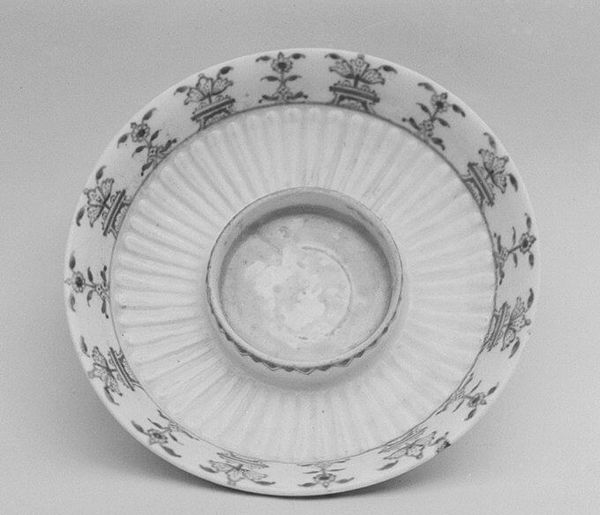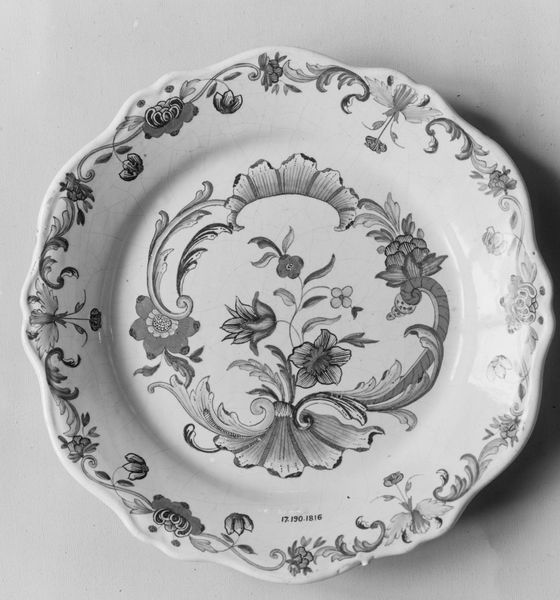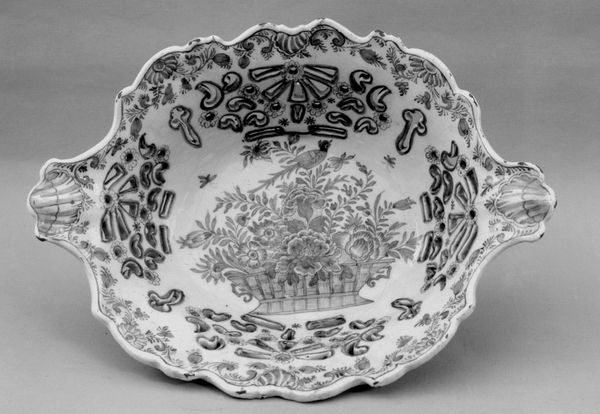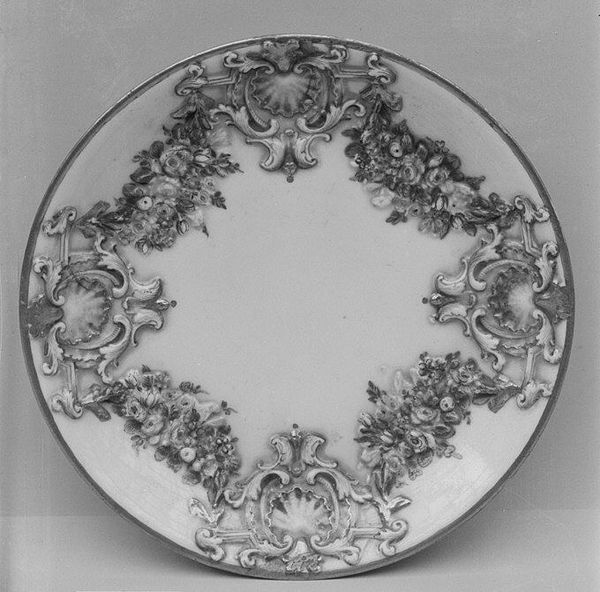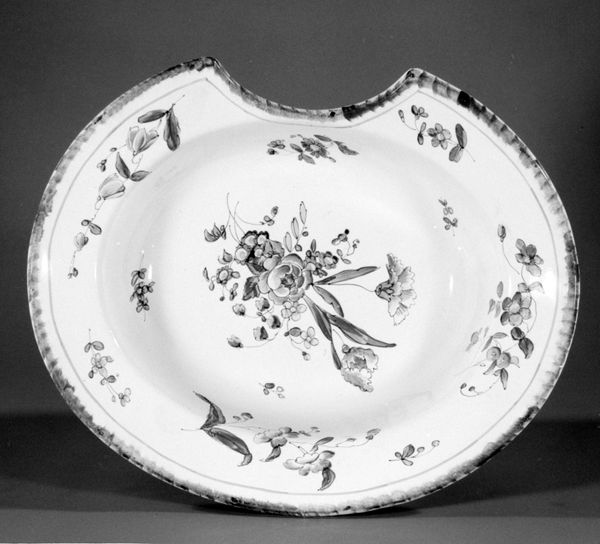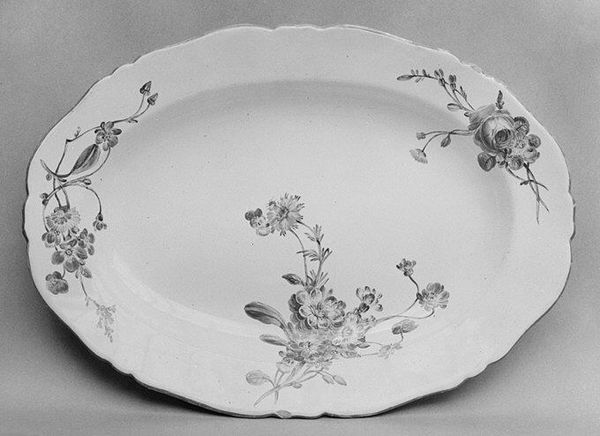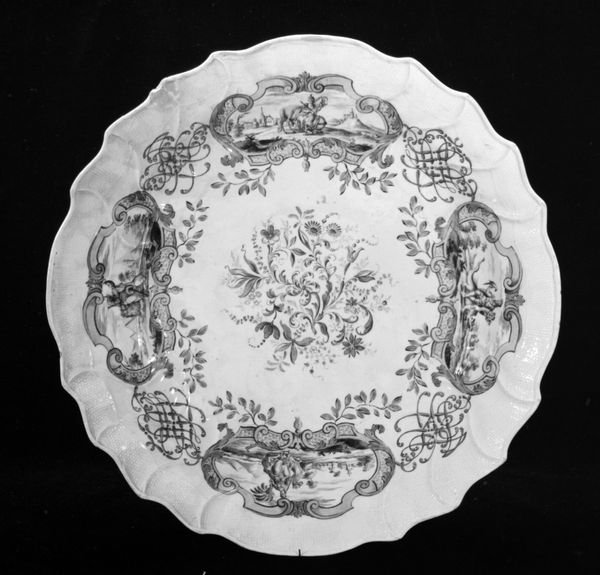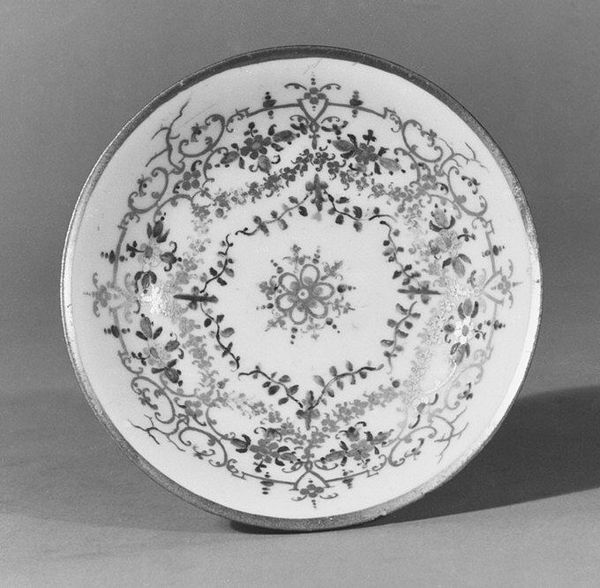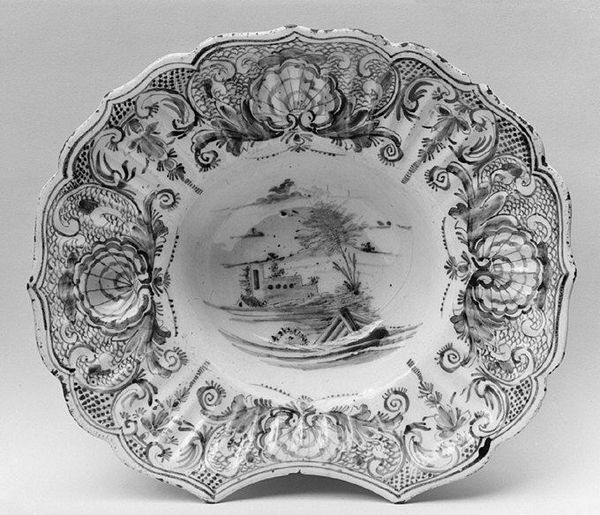
drawing, ceramic, sculpture, pendant
#
drawing
#
decorative element
#
ceramic
#
flower
#
figuration
#
sculpture
#
decorative-art
#
rococo
#
pendant
Dimensions: Diameter: 10 in. (25.4 cm)
Copyright: Public Domain
This plate was crafted in France by Pierre-Clement Caussey in the 18th century out of tin-glazed earthenware. Notice the cherubs, those chubby, winged children so fashionable in European art. Consider the context: Caussey worked during the Enlightenment, a period that championed reason and classical ideals. The rediscovery of ancient Roman art fueled the popularity of cherubs, evoking a sense of innocent, pre-Christian delight. But these images also operated in a society steeped in social hierarchy. While cherubs often appear in religious contexts, here, they’re ornamental, emblems of luxury. This plate would have adorned the table of a wealthy household, a silent marker of status. How might the enslaved people who produced the sugar eaten off this plate have felt about these images of carefree, white children? While seemingly innocent, this plate reflects the complex entanglements of beauty, power, and privilege.
Comments
No comments
Be the first to comment and join the conversation on the ultimate creative platform.
